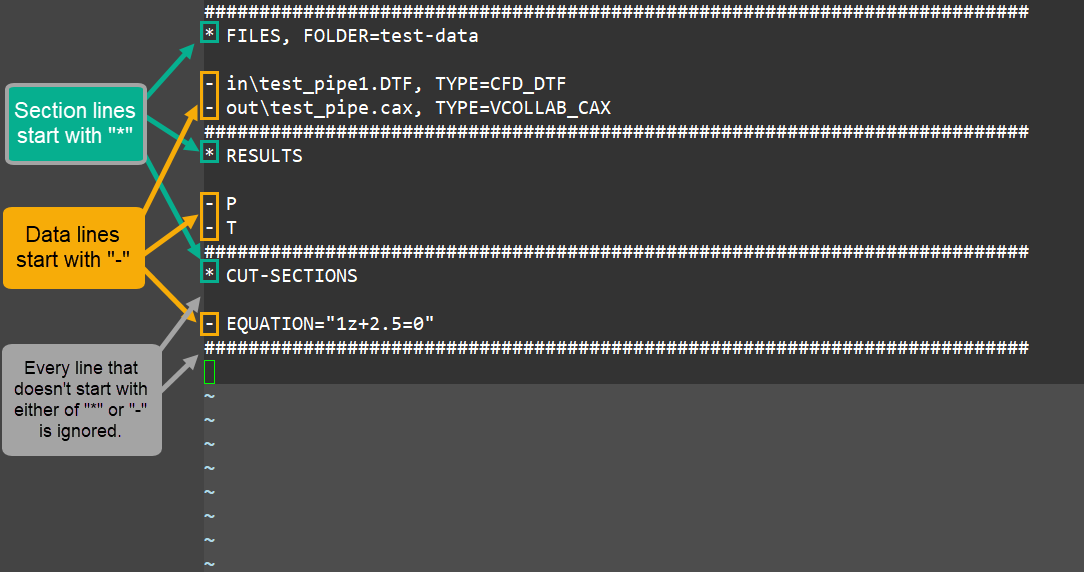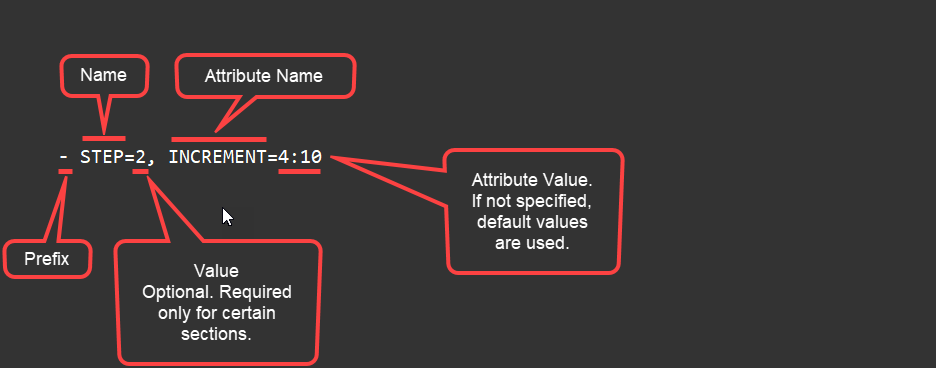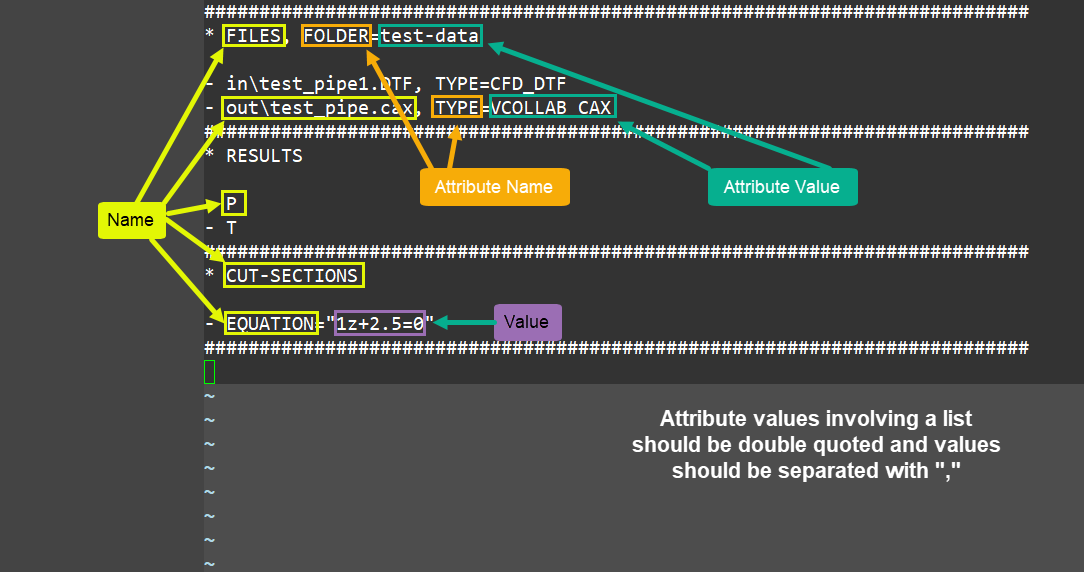Arguments
The following images provides a screenshot of a typical arguments file. It also describes various elements involves in a typical arguments file.
Translation inputs are categorized into multiple sections.
Currently supported sections: Files, Parts, Results and Cut-sections
Sections are made of data.
Each line can be a section, data, a continuation line or a comment.
Section lines start with
*, data lines start with-and continuation lines start with,.Everything else is considered as a comment and is ignored.
A section can’t appear more than once in an input file.
The following examples show various parts of a section/data line.
The following screenshot shows a few examples.
Sections and data lines need to specify the name.
Data lines for a some sections may need the values to be specified along with the data name.
Both sections and data lines are made of attributes separated by
,characters.Attribute is of the form
<attribute_name>=<attribute_value>.Attribute value is optional in many cases. If attribute value is not specified, the default value is used.
If user needs to specify a list of values for any key, the user needs to specify them in quotes and using
,as separator.All the keywords (name, value, attribute name and attribute value) are case insensitive, except for the file names.
The following sections describe the details of these sections of the arguments file.


